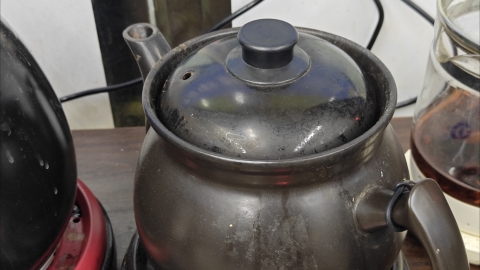How does traditional Chinese medicine treat secondary telangiectasia?
Secondary capillary dilation can generally be managed in traditional Chinese medicine (TCM) through syndrome differentiation and internal administration of herbal medicine, external herbal washes, acupuncture, acupoint application, and bloodletting therapy. Specific approaches are as follows:

1. Syndrome-based Internal Herbal Medicine: TCM practitioners classify the underlying causes and tailor treatment accordingly. For example, heat in the blood type is treated with herbs that clear heat and cool the blood; qi stagnation with blood stasis type is treated with herbs promoting qi flow and activating blood circulation; yin deficiency with hyperactivity of fire type is treated with herbs that nourish yin and reduce internal heat. Oral herbal formulas help regulate organ function and improve the body's circulation of qi and blood, thereby fundamentally alleviating symptoms of capillary dilation.
2. External Herbal Wash: Herbs with functions of clearing heat, promoting blood circulation, and unblocking meridians are decocted and used externally on affected areas. Active components penetrate the skin and act directly on dilated capillaries, helping to reduce local congestion, improve cutaneous microcirculation, and relieve symptoms such as redness and burning sensation.
3. Acupuncture Therapy: By stimulating specific acupoints, acupuncture helps regulate the flow of qi and blood. Commonly selected points include Xuehai (SP10), Quchi (LI11), and Hegu (LI4). This method promotes blood circulation, resolves blood stasis, unblocks meridians, and reduces swelling, thus restoring normal local circulation and reducing the severity of capillary dilation. This should be performed only by qualified practitioners.
4. Acupoint Application: Herbal medicines are prepared into ointments or pellets and applied to specific acupoints. Through combined stimulation of acupoints and transdermal absorption of medicinal ingredients, this method regulates organ function and qi-blood balance, improves local microcirculation, and helps alleviate capillary dilation symptoms. It is particularly suitable for individuals who have low tolerance for acupuncture.
5. Bloodletting Therapy: For capillary dilation caused by excessive heat in the blood, a small amount of blood may be drawn from specific sites under the supervision of a trained practitioner. This therapy clears heat, cools the blood, activates blood circulation, and removes blood stasis, rapidly relieving local congestion. However, strict adherence to indications and procedural standards is essential—self-treatment is strongly discouraged.
Treatment should be conducted at正规 TCM institutions, where licensed practitioners develop individualized plans based on syndrome differentiation. Self-medication or self-administered procedures are not recommended. If symptoms fail to improve or worsen after treatment, the plan should be promptly adjusted. When necessary, integration with Western medical evaluation is advised to clarify the underlying cause.







